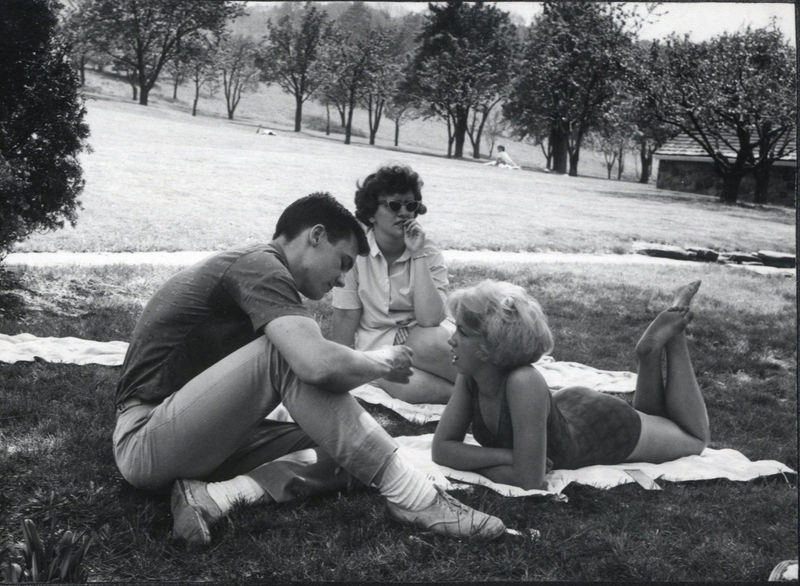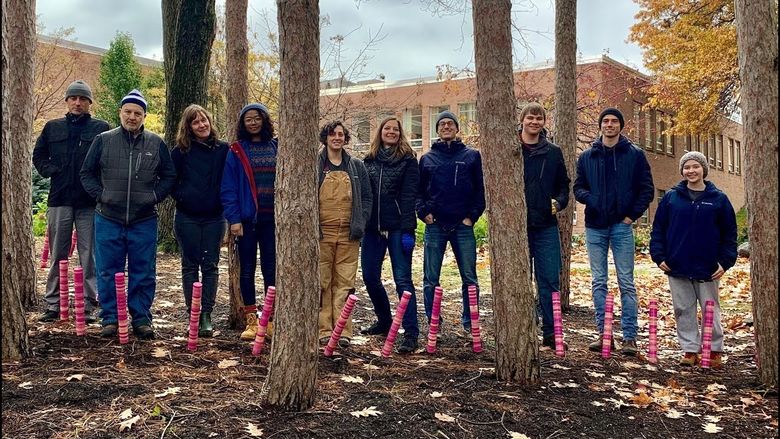
Norman B. “Bill” Patterson taught mathematics at what was then called the Behrend Center. His photos of life on campus in those early years are now on display in Kochel Center.
Editor's note: This story originally appeared on Penn State Behrend's blog. You can read the blog post and view more photos here.
ERIE, Pa. — Though he taught generations of college students during his 37 years as a mathematics professor at Penn State Behrend, Norman B. “Bill” Patterson established a legacy that goes far beyond linear algebra, differential equations and statistics. When he retired, in 1990, he left a trove of photographs, documenting life at Behrend with intimacy and affection.
The camera he used to record much of it — a $129 model he saved all year to buy from Erie’s Boston Store in 1954 — is in the archives at Lilley Library, along with hundreds of his photos.
“If a picture paints a thousand words, Bill’s photos are surely the most expensive materials in the Behrend archives,” said Jane Ingold, reference and instruction librarian and archivist at Behrend. “My ability to answer the many calls for photos for anniversary exhibits and stories like this one would be severely limited without them.”
As part of the college’s 75th anniversary celebration, a sampling of Patterson’s work is on exhibit in Kochel Center. “Behrend Begins: The Campus Photography of Norman B. Patterson,” highlights some of his most evocative photos from the 1950s through the early 1970s.
The exhibit provides a fascinating look into the past, offering a visual record of how Behrend has grown and changed over time.
At 98 years old, Patterson, who resides in an Erie-area senior facility, is happy to talk about photography, and about life at Behrend in the college’s early years. When asked what type of camera he liked to shoot with, he quipped, “Anything I could get ahold of."
“Some things you are just interested in from Day One,” he said. “I liked taking pictures.”
Patterson’s introduction to photography came in 1938, when his older brother bought a camera. Much happened for Patterson in the next 15 years, including receiving an undergraduate degree in chemistry, serving in the U.S. Army in World War II, and returning to graduate school to earn a mathematics degree, courtesy of the GI Bill.
When he was offered a teaching position at the five-year-old Behrend Center in Erie, a place he had never been to, he took the job.
“I said, ‘Well, I have nothing in mind at the moment, so why not?’” he said.
When he arrived at Behrend, no science buildings yet existed. The library was in what is now the Studio Theatre, and Turnbull Hall had been converted from a horse barn for the Behrend family into academic space. On his first day, the original Erie Hall opened.
He quickly fell for the campus, and for Erie.
“I liked Behrend, and I love Erie,” he said. “We have it all here.”
As was customary in higher education then, faculty members were heavily involved in the life of the campus and its students. There were few administrators and staff members. It was faculty members who helped with student clubs, activities and events.
“I was up there at the college for events and things three, four nights a week,” Patterson said. “And if you saw me, my camera would be right next to me. I took it with me everywhere I went.”
He recorded history as it happened — one Winter Sno Ball dance, Hanging of the Greens, and Student Work Day at a time. He also photographed the people on campus and the daily college life that so fascinates today — the “lunch ladies” making food in the Glenhill Farmhouse kitchen, students cannonballing into the pool and skiing down the hill behind today’s School of Science complex, and the female students who lived on the second floor of the farmhouse, with bunkbeds stacked in each room.
When night fell, he developed the photos. “I didn’t have a darkroom, so I just had to wait until it got dark,” he said.
Later, he added a darkroom at home, in a corner of his basement. His son, Bob Patterson, a lecturer in accounting at Behrend, said that when he and his two sisters were growing up, they knew better than to flip on the basement lights without asking and risk ruining their dad’s work.
By the time Patterson retired, he had witnessed — and captured in photos — the remarkable growth of Penn State Behrend over nearly four decades. And, yet, he has a fondness for the earlier, leaner years at the college.
“The lack of resources in the 1950s meant that you had to make do with what you had,” he said. “We didn’t have people to do the auxiliary, non-teaching work, so the faculty were much more involved in student activities and things.”
Patterson, who was never without his camera, was there to document it all. In retirement, he continued to enjoy photography, even mastering photo-editing software programs.
“When dad retired, he got a computer,” Bob Patterson said. “I went over to help him set it up and he was the best student I ever taught. It wasn’t long before he was editing and restoring photos and turning them into 3D images.”
To further cement Patterson’s legacy at Behrend, a third generation of his family now works at the college: Granddaughter Katie Patteson, Bob’s daughter, serves as an admissions counselor.
Heather Cass
Publications and design coordinator
Penn State Erie, The Behrend College










